Out of the 46 American presidents, 12 have served in the military, reaching the rank of general, and six of them served during the Civil War. Leaders like Ulysses S. Grant, Dwight D. Eisenhower and George Washington demonstrated their leadership and administrative abilities as generals, which proved invaluable during their presidencies.
When the 117th Congress convened on Jan. 3, 2021, only 91 of its members – just over one-sixth – were veterans, marking the lowest number since at least WWII, according to the MilitaryTimes. Military service was once considered essential for climbing the political ladder, especially to the presidency. Most of America’s chief executives have served in some branch of the armed forces. (See each president’s path to the Oval Office.)
However, the biographies of presidents who did not reach the rank of general demonstrate that military life can reveal unknown leadership skills. Harry S. Truman experienced this when he became the captain of an artillery unit in World War I. Similarly, while political connections helped John F. Kennedy secure a commission in the Navy, he proved his courage during World War II as a PT boat commander, saving his crew after their boat was rammed by a Japanese destroyer.
To compile a list of the 31 presidents who served in the military – including state militias – 24/7 Tempo reviewed sources such as Militarytimes and Military.com.
Kennedy was the first Navy member to become president. Since then, the Navy has proven to be a successful path to the White House, with six of the last eight presidents on our list having served as sailors. Military exploits, regardless of rank, have boosted the political fortunes of many future presidents. William Henry Harrison’s victory over Native Americans at the Tippecanoe River in 1811 became part of his presidential campaign slogan. Similarly, James Garfield’s heroism at the Battle of Middle Creek in the Civil War became known as “the battle that made a presidency.”
In 1898, Theodore Roosevelt resigned from his position as assistant secretary of the Navy to form a volunteer cavalry unit and fight in the Spanish-American War in Cuba. In 2001, he was posthumously awarded the Medal of Honor, making him the only president to receive the nation’s highest military honor. (Check out the most decorated war heroes in American history.)
Here are the United States Presidents who served in the military:
George Washington (1732-1799)
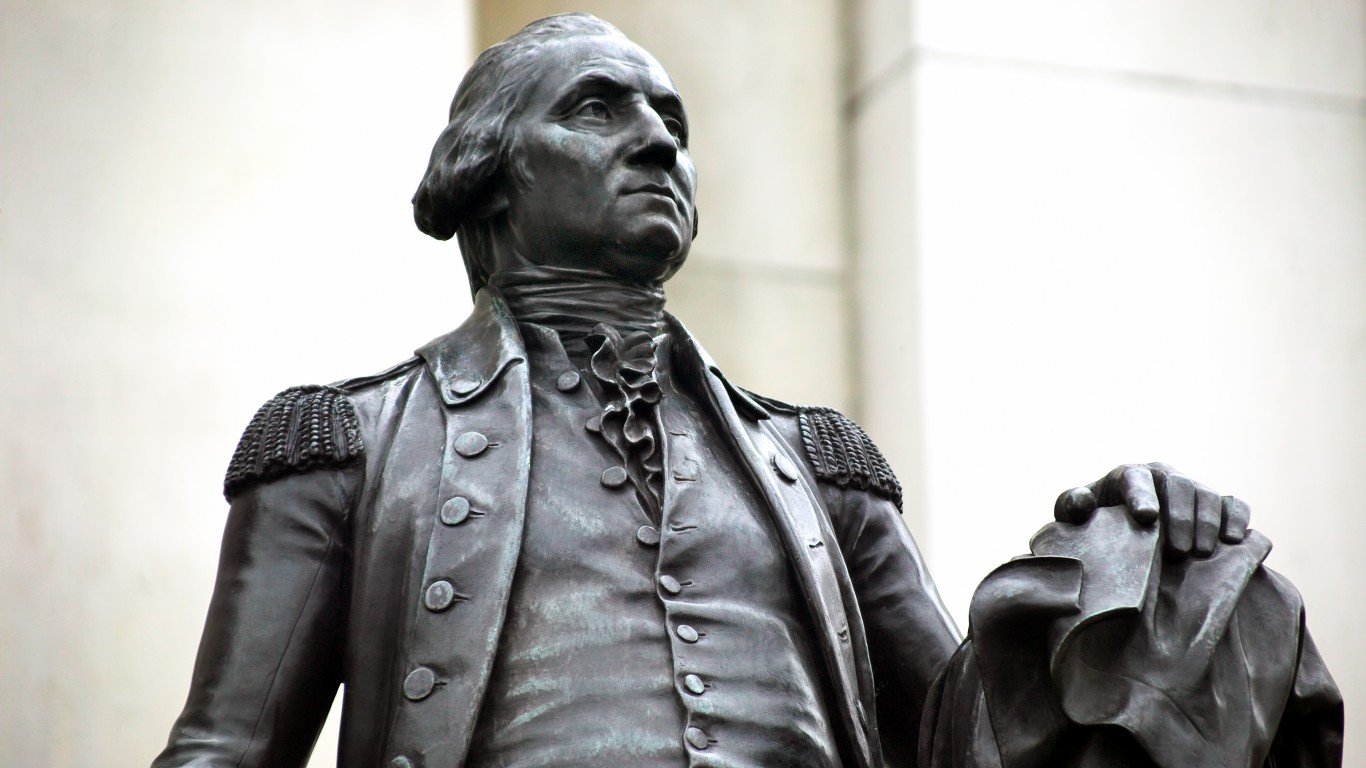
- Presidential term: 1789-1797
- Time served in military: 1753-1783
- Peak rank during military service: Major general and commander-in-chief of the Continental Army
Washington was commissioned as a major in the Virginia Militia in 1753 and fought alongside the British during the French and Indian War. At the onset of the Revolutionary War, he was appointed major general and became the commander-in-chief of the Continental Army, serving from 1775 to 1783. After the war, he returned home to his estate at Mount Vernon in Virginia. However, his country called him back to service when Congress unanimously elected him as the nation’s first president in 1789. His tenure would go on to define the office of the chief executive.
Thomas Jefferson (1743-1826)
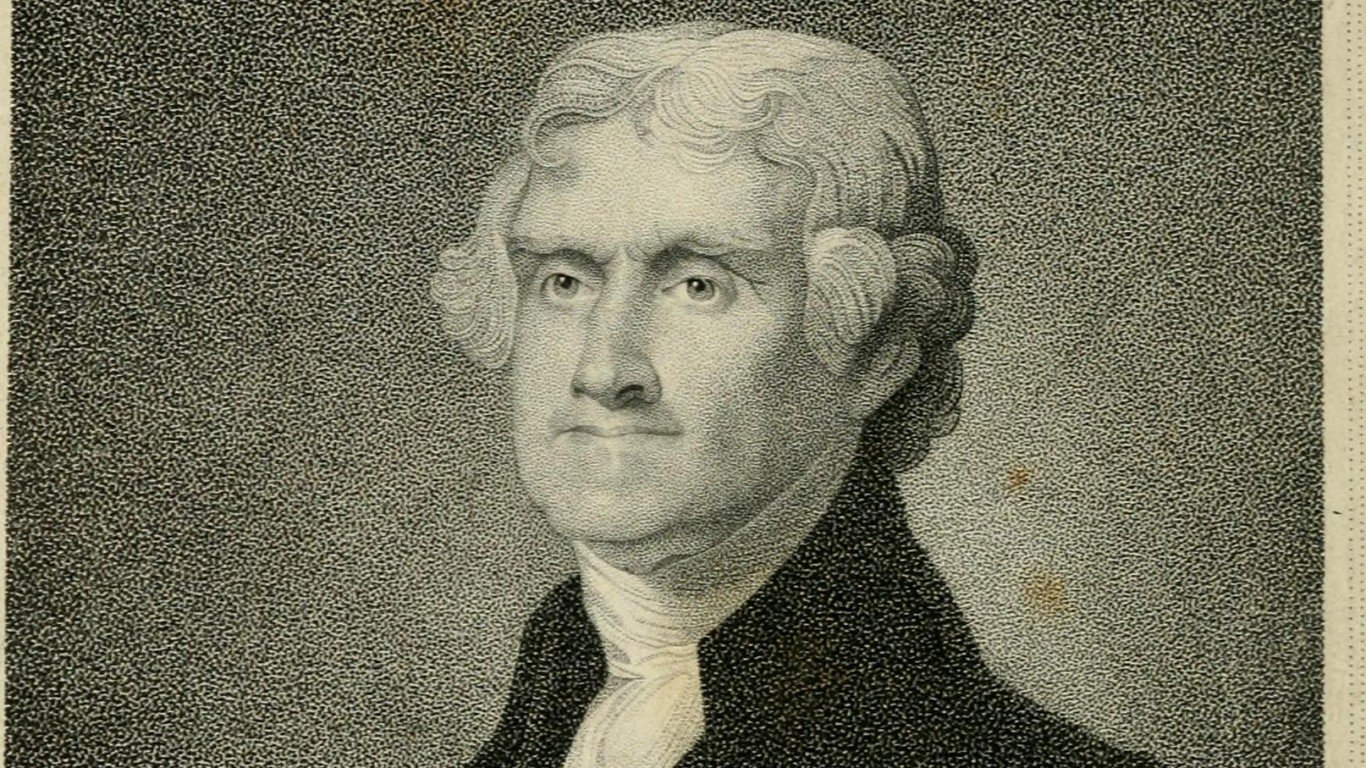
- Presidential term: 1801-1809
- Time served in military: 1770-1779
- Peak rank during military service: Colonel in the Albemarle County (Virginia) militia
The nation’s third president, Jefferson served in the Albemarle County militia from 1770 until he was elected governor of the state in 1779. Along the way, he became a member of the Continental Congress, and was the principal author of the Declaration of Independence, promulgated by that body in 1776. In 1781, in his role as commander-in-chief of the Virginia militia, he mobilized his troops to join the Continental Army. The reinforcements helped the army win the Battle of Yorktown, the last major land battle of the American Revolution.
James Madison (1751-1836)
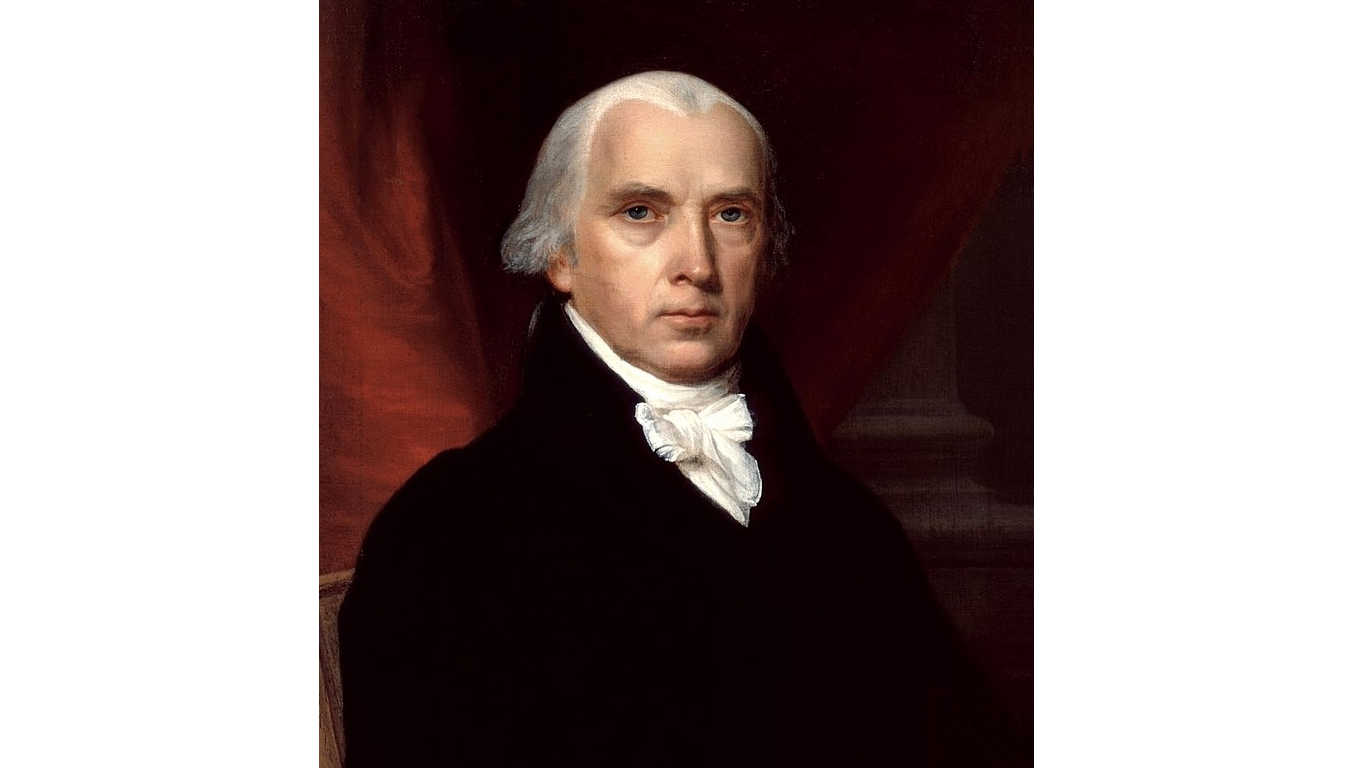
- Presidential term: 1809-1817
- Time served in military: 1775-1776
- Peak rank during military service: Colonel in the Orange County (Virginia) militia
In 1775, after a brief stint as a private, Madison was commissioned as a colonel and appointed commander of the Orange County militia, serving under his father, James Madison Sr. The following year, he was elected as a delegate to the Fifth Virginia Convention. However, poor health prevented the future fourth president from seeing action during the Revolutionary War.
James Monroe (1758-1831)
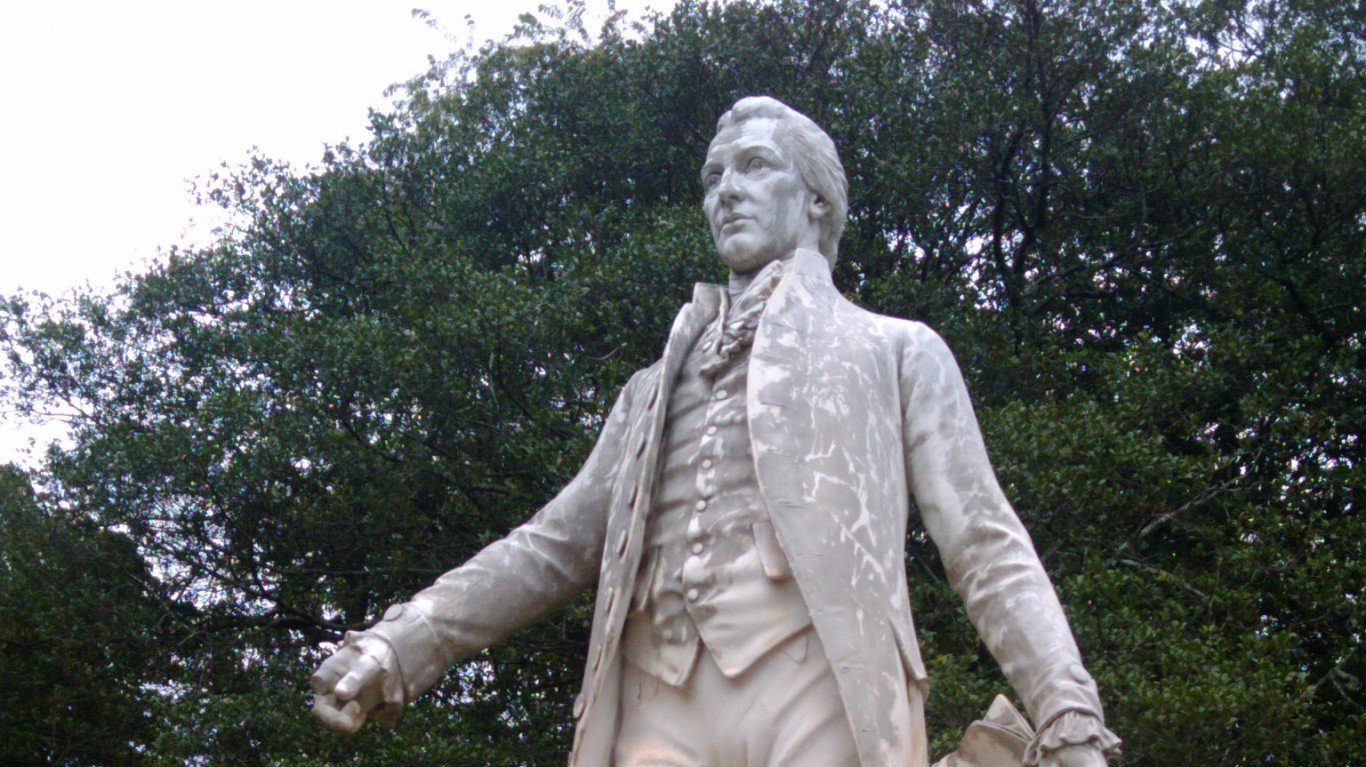
- Presidential term: 1817-1825
- Time served in military: 1775-1780
- Peak rank during military service: Lieutenant-colonel in the Virginia Militia
Monroe almost didn’t become the nation’s fifth president. During the Battle of Trenton on Christmas Day, 1776, he suffered a severe wound. After surviving the injuries, he was promoted to major by George Washington. In late 1778, he resigned his commission, but at the behest of Thomas Jefferson, he accepted a role as lieutenant-colonel in the Virginia Militia.
Andrew Jackson (1767-1845)
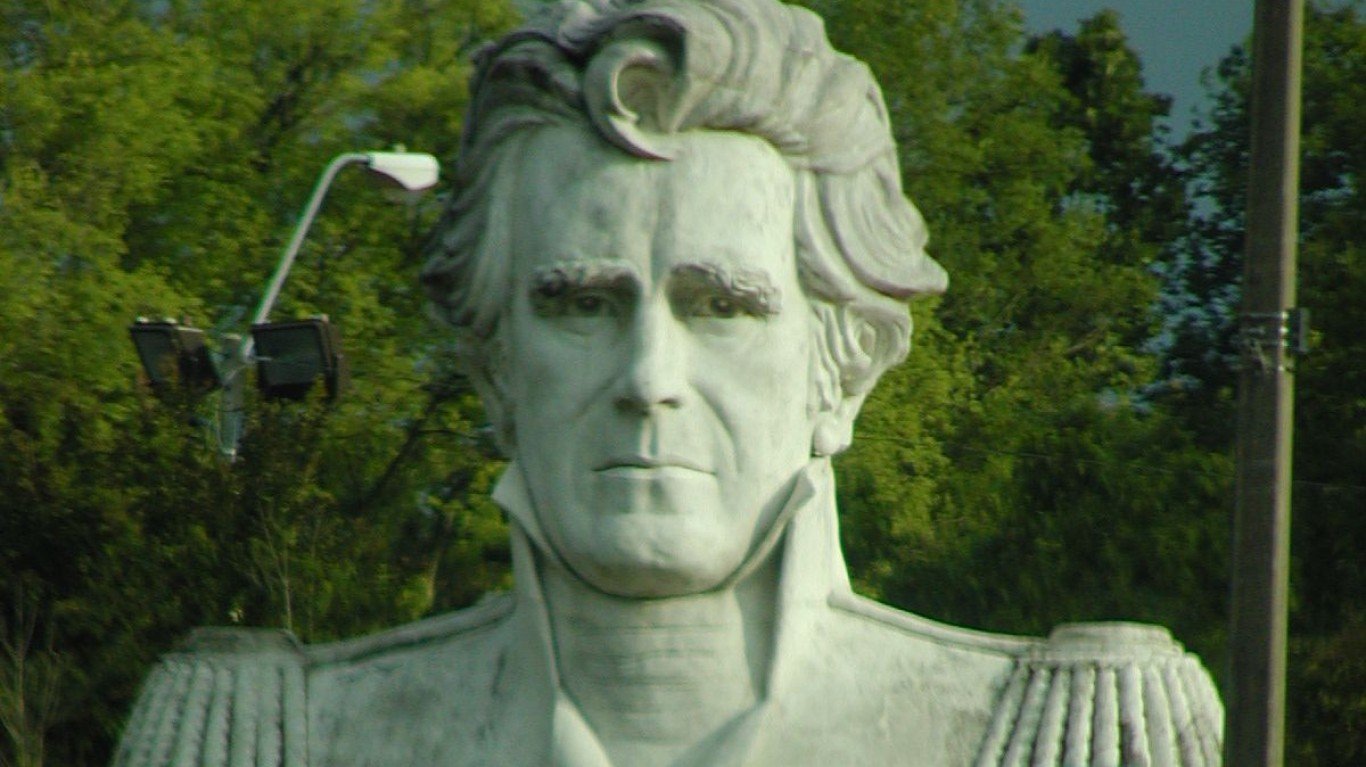
- Presidential term: 1829-1837
- Time served in military: 1802 -1815
- Peak rank during military service: Major general in the U.S. Army
The feisty Jackson was appointed as a major general of the Tennessee militia in 1802, even though he lacked formal military training. His nickname “Old Hickory,” after the deep-rooted hickory tree, spoke to his toughness. Jackson gained fame for winning several battles against Native American forces during the Creek War – after which he was promoted to the rank of major general in the Regular Army of the United States – and for subsequently defeating the British in the Battle of New Orleans during the War of 1812. Jackson would ride his popularity all the way to the White House in 1829.
William Henry Harrison (1773-1841)
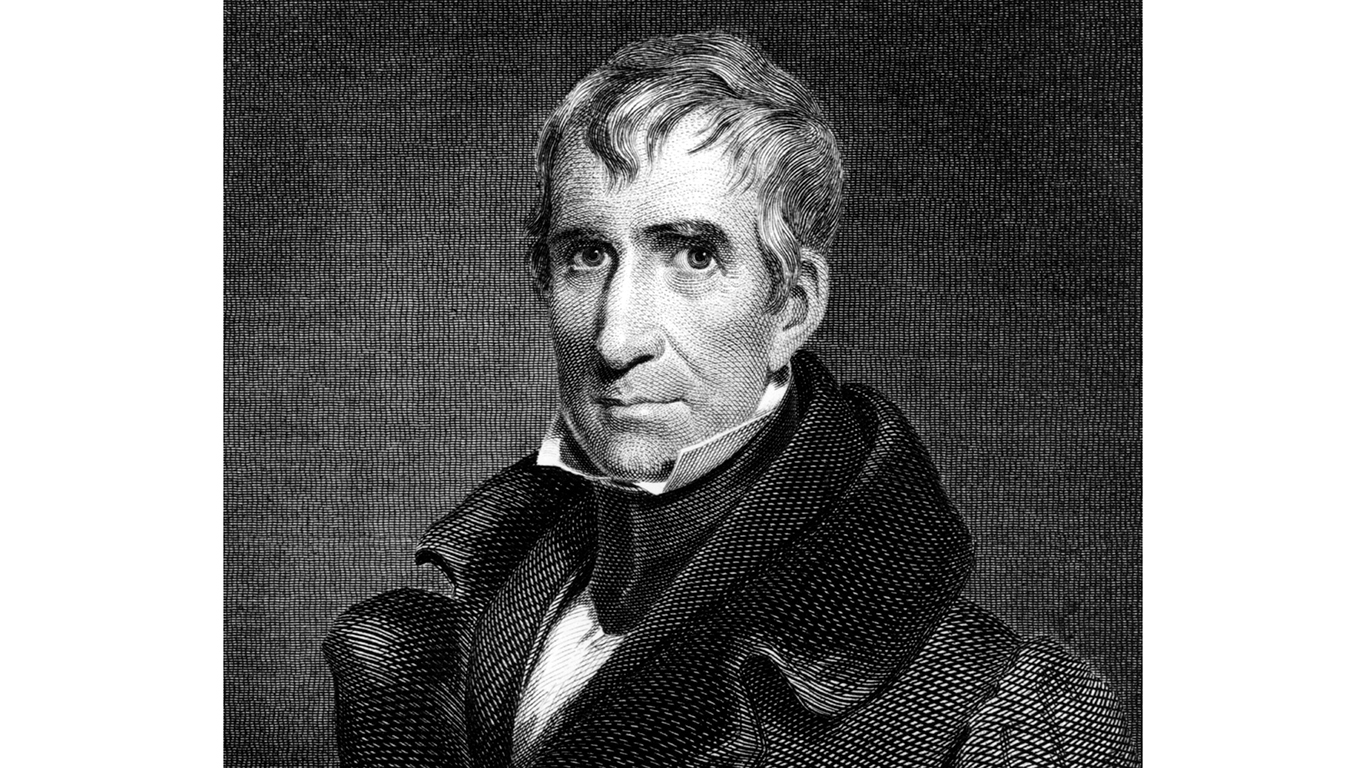
- Presidential term: 1841
- Time served in military: 1791-1814
- Peak rank during military service: Brigadier general and commander in the U.S. Army of the Northwest
Harrison, the shortest-serving president, initially studied medicine before switching to a military career. He joined the Army in 1791 and became aide-de-camp to General “Mad Anthony” Wayne, participating in the Northwest Indian and Tecumseh wars. In 1811, Harrison subdued the Shawnee at the Tippecanoe River, earning the nickname “Old Tip.” He was promoted to brigadier general and became commander of the Army of the Northwest in 1812, where he defeated a combined force of British and Native Americans in 1813. Harrison resigned from the Army in 1814.
John Tyler (1790-1862)
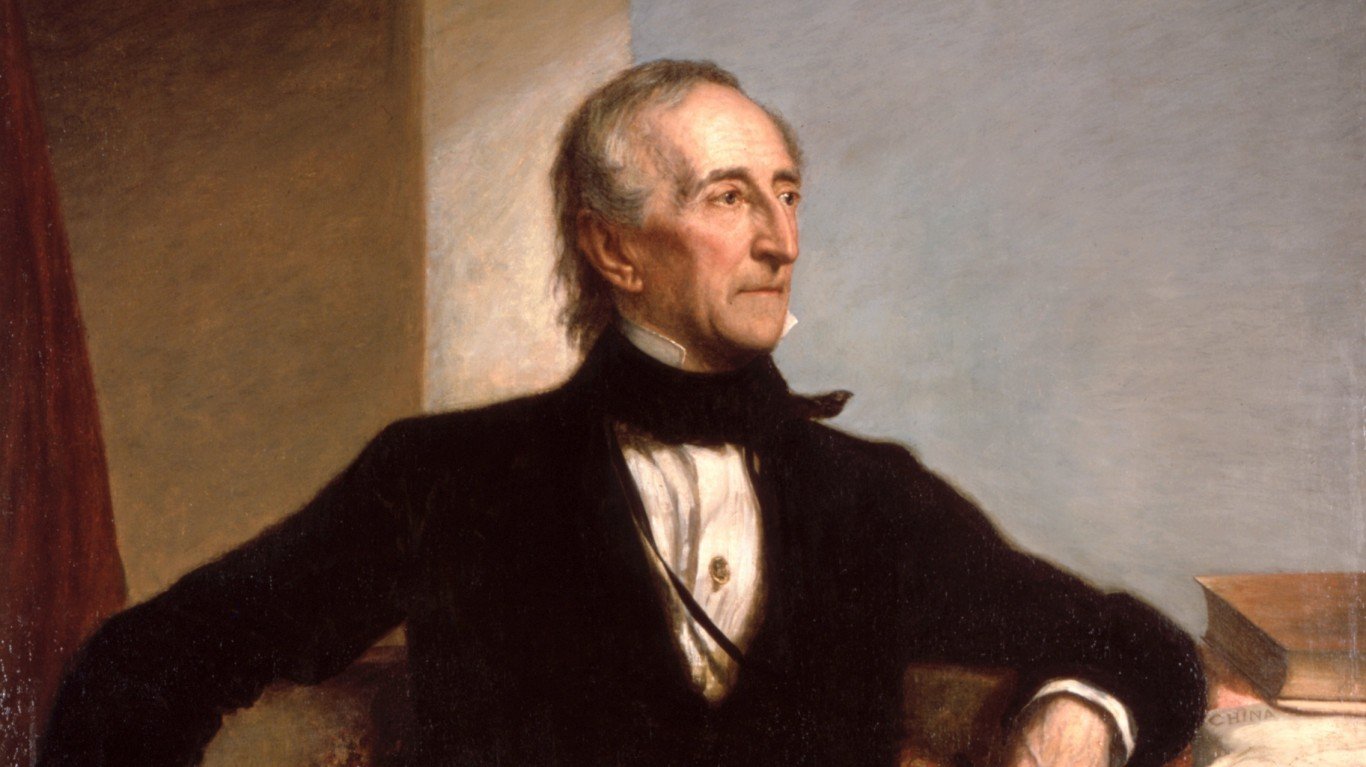
- Presidential term: 1841-1845
- Time served in military: 1813
- Peak rank during military service: Captain in the Charles City Rifles (Virginia militia)
Tyler was the captain of a local militia called the Charles City Rifles that was formed in the summer of 1813 to face a British force supposedly marching on the Virginia capital of Richmond during the War of 1812. They joined a larger Virginia militia and waited for the British, who never came. Tyler then dissolved the unit.
James K. Polk (1795-1849)
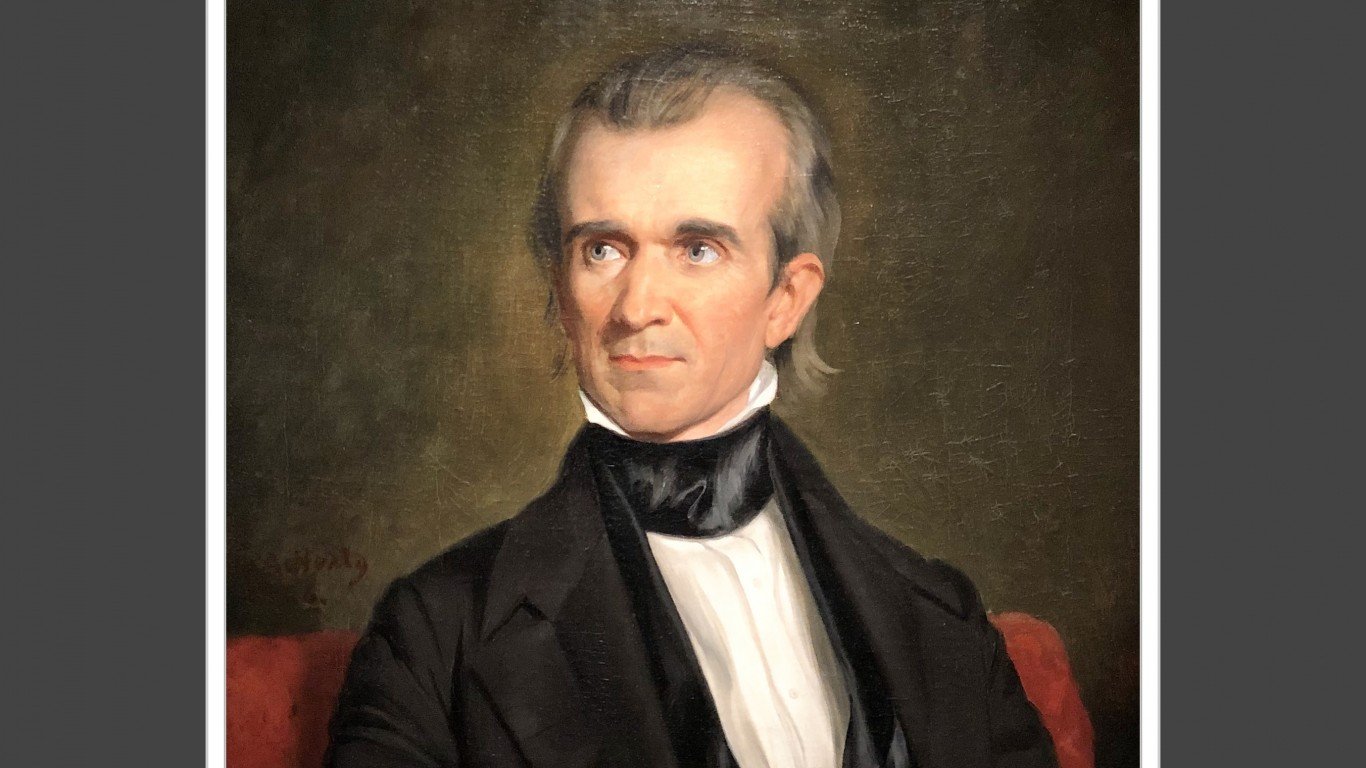
- Presidential term: 1845-1849
- Time served in military: 1821
- Peak rank during military service: Colonel in the Maury County (Tennessee) militia
Although Polk spent only a year in a Tennessee militia, the military played a significant role in his presidency, particularly during the Mexican-American War, which expanded American territory westward. Despite his limited military experience, Polk was deeply involved in the war, overseeing all aspects including outlining battle strategies, selecting and dismissing officers, and managing logistical matters.
Zachary Taylor (1784-1850)
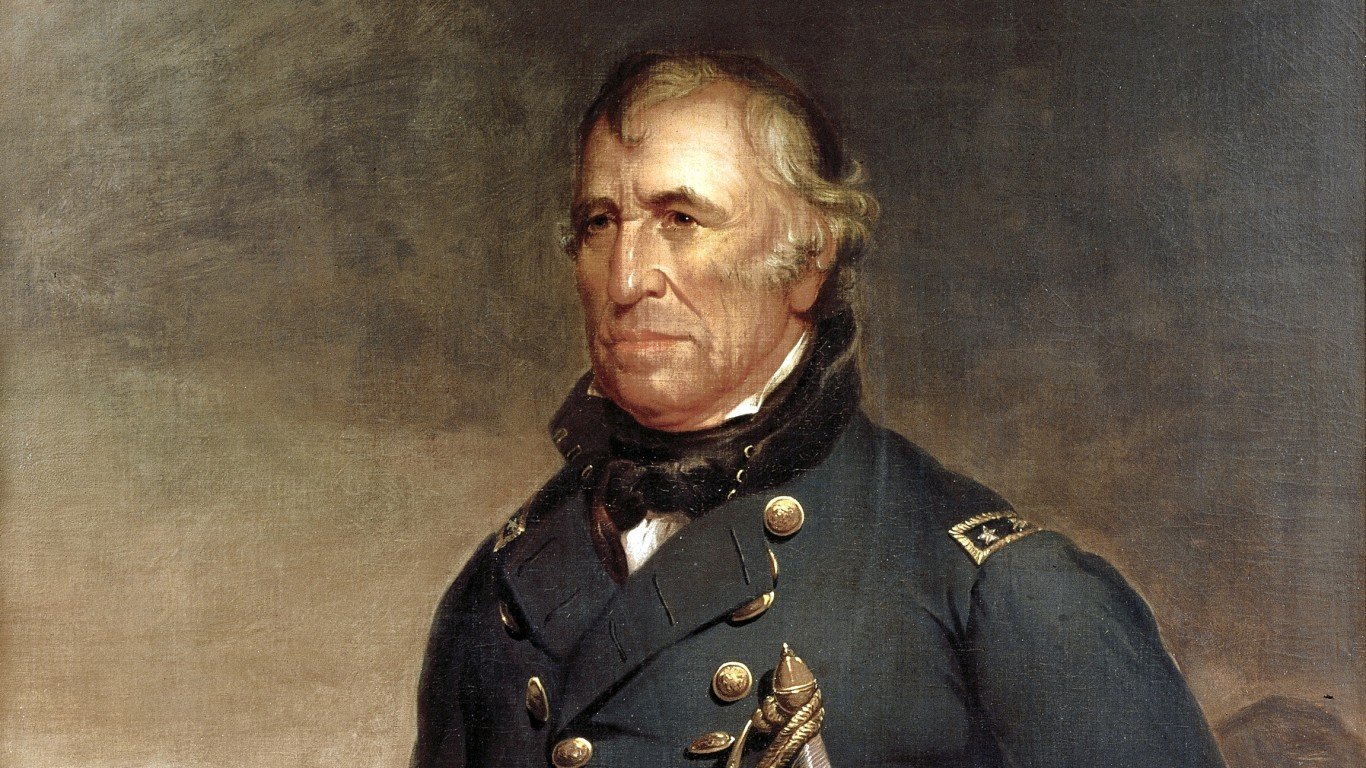
- Presidential term: 1849-1850
- Time served in military: 1808-1849
- Peak rank during military service: Major general in the U.S. Army
Taylor’s long army career helped lift him to White House. Nicknamed “Old Rough and Ready” for his willingness to endure the same hardships as his men, he rose through the ranks during the War of 1812, the Black Hawk War, and the Second Seminole War. During the Mexican-American War, his victories at Palo Alto, Monterrey, and Buena Vista earned him a promotion to major general and made him a presidential contender. He won the presidency in 1848, but held office for only 16 months, dying in 1850 from acute gastroenteritis.
Millard Fillmore (1800-1874)
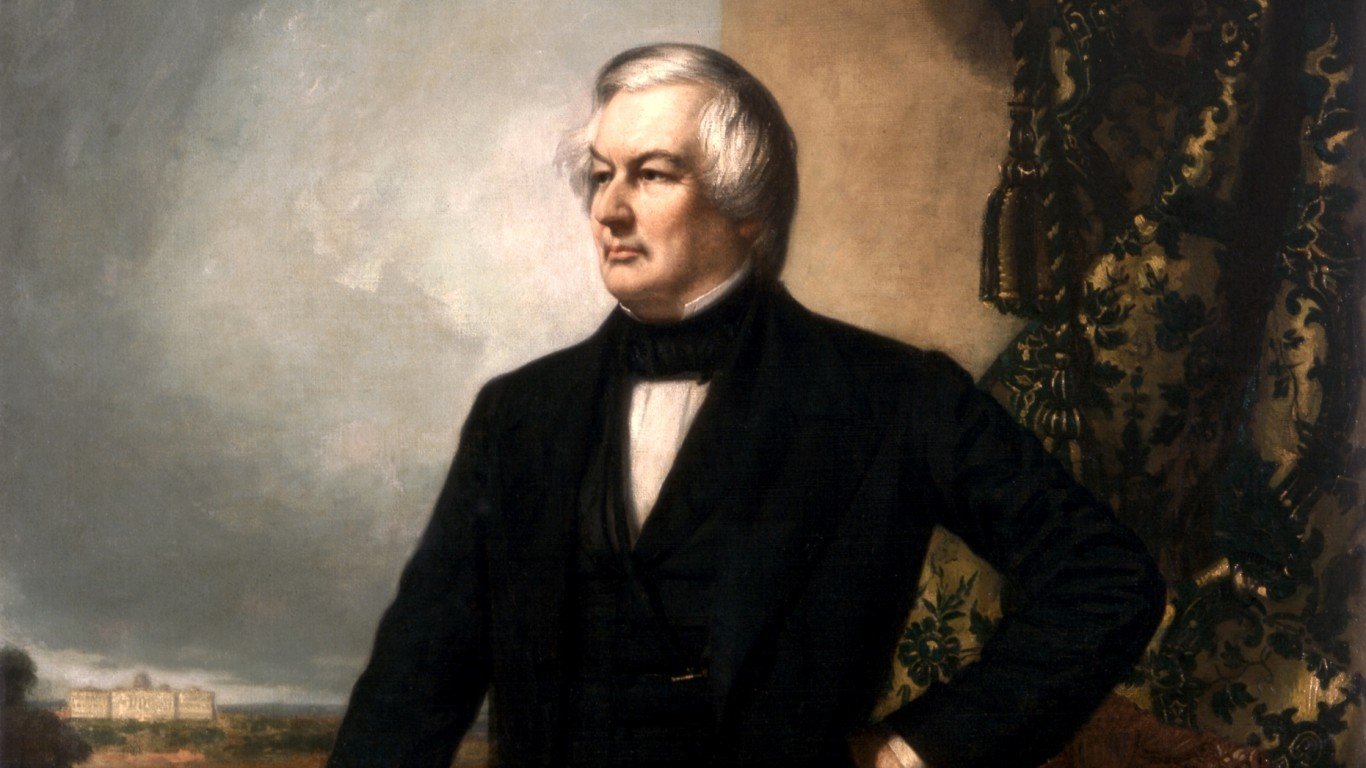
- Presidential term: 1850-1853
- Time served in military: 1861
- Peak rank during military service: Captain in a New York home guard
Fillmore, who succeeded Taylor, served as a captain in the Union Continentals, a home guard unit of men over 45 from upstate New York. This unit operated in Buffalo during the early months of the Civil War.
Franklin Pierce (1804-1869)
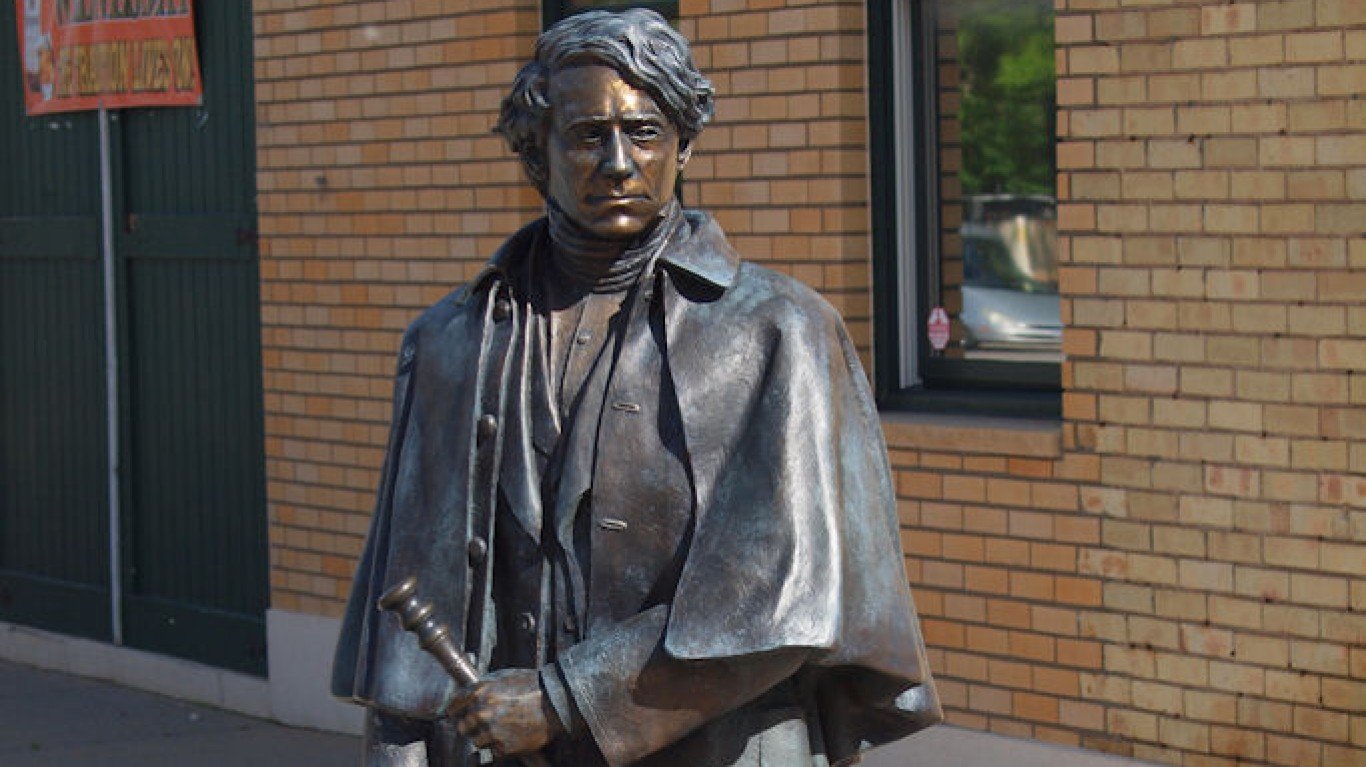
- Presidential term: 1853-1857
- Time served in military: 1831-1842, 1856-1848
- Peak rank during military service: Brigadier general in the U.S. Army
Pierce, whose father served under George Washington during the American Revolution, joined the New Hampshire militia in 1831, rising to the rank of colonel. When the U.S. declared war on Mexico in 1846, he signed up to serve in the regular army and the following year was promoted to brigadier general. Pierce was involved in several military engagements, badly injuring his knee when his horse stumbled during one battle. At another point, a bullet punctured his hat.
James Buchanan
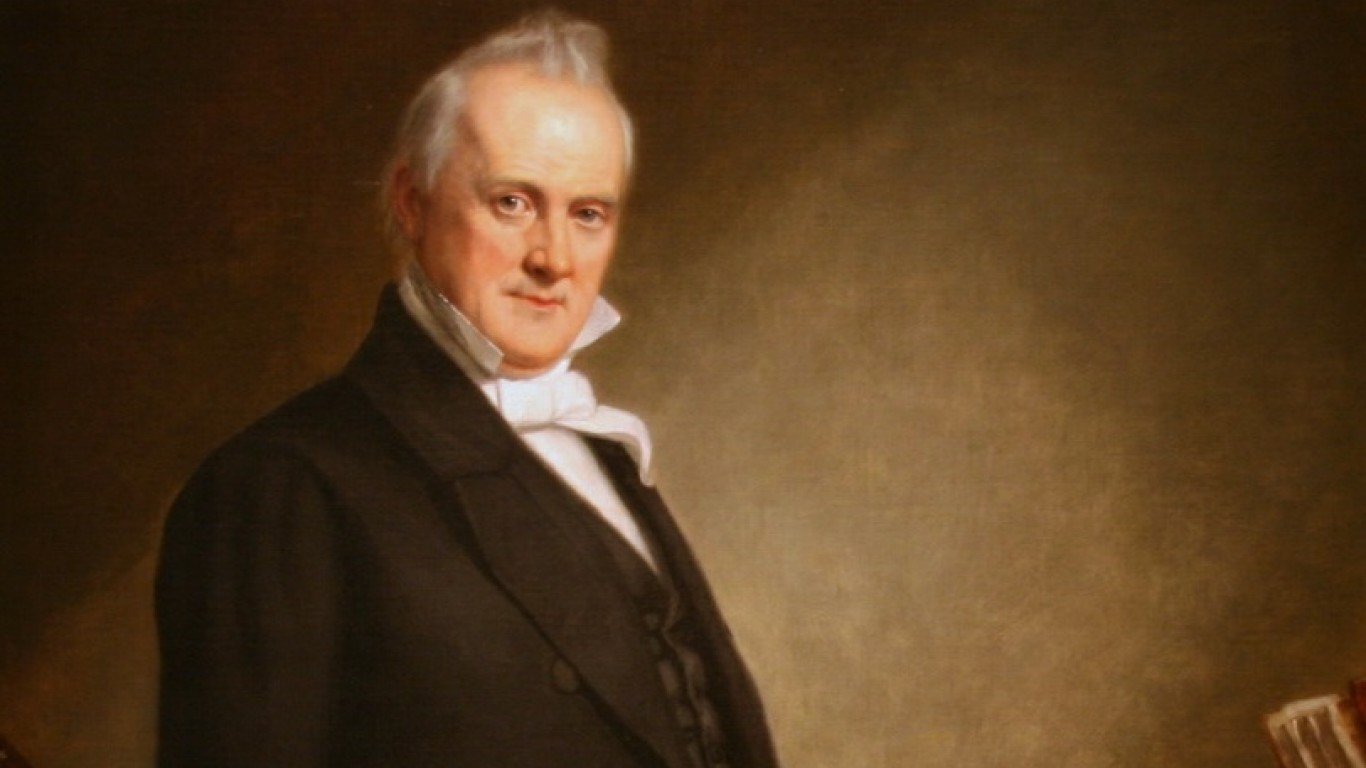
- Presidential term: 1857-1861
- Time served in military: 1814
- Peak rank during military service: Private in a Pennsylvania militia
Buchanan was the last president who served in the War of 1812 and is the only chief executive with military experience who never became an officer. Though he was initially opposed to the war, he thought it was the duty of his fellow Americans to volunteer once the conflict began. After the British captured the nation’s capital in 1814, he enrolled in Henry Shippen’s Company, a Pennsylvania militia unit.
Abraham Lincoln
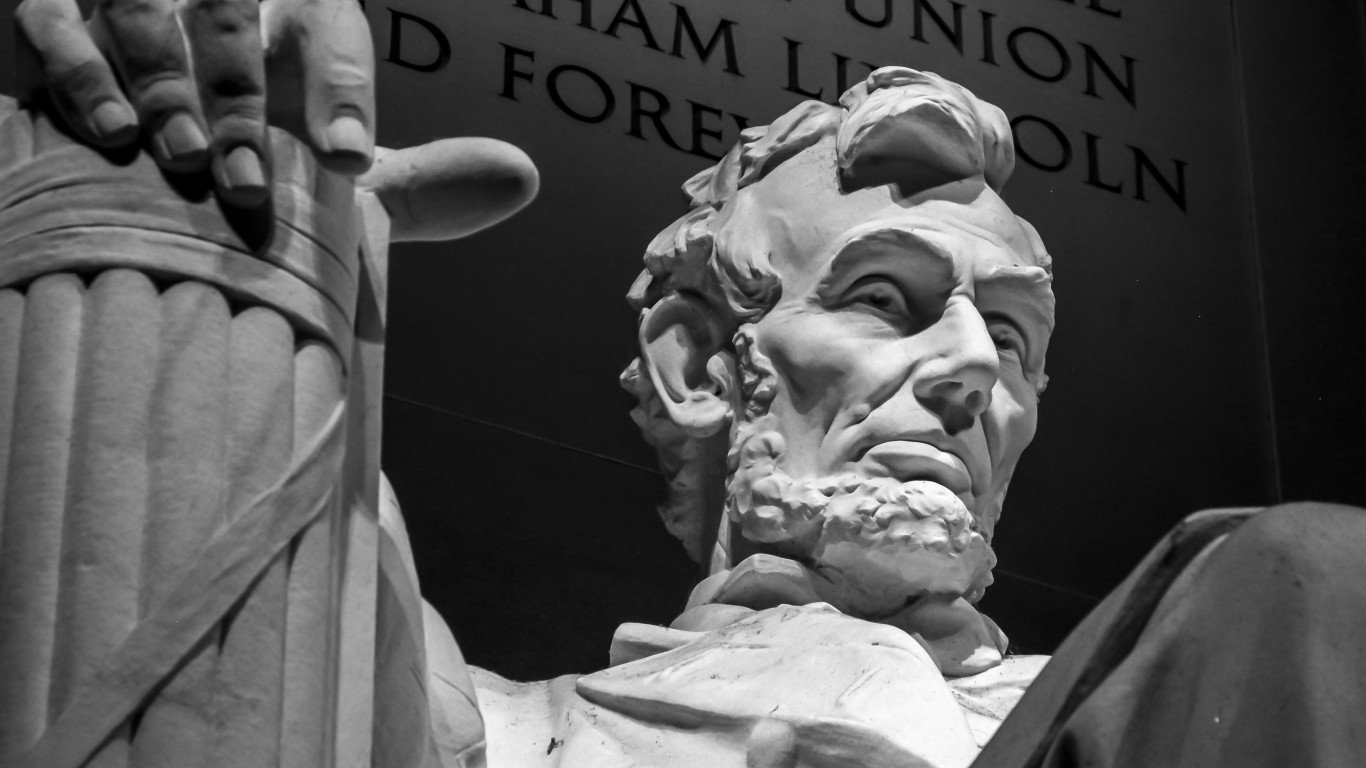
- Presidential term: 1861-1865
- Time served in military: 1832
- Peak rank during military service: Captain in the Illinois militia
The Great Emancipator’s only military experience was in 1832 as captain of a militia unit that saw no action in the Black Hawk War – a conflict that occurred when the Sac and Fox people attempted to return from Iowa to their ancestral home in Illinois, violating the terms of treaties they’d signed. Despite his lack of military experience at the outset of the Civil War, Lincoln proved to be a quick study in strategy, assessing the strengths and weaknesses of his commanders and their operations.
Andrew Johnson (1808-1875)
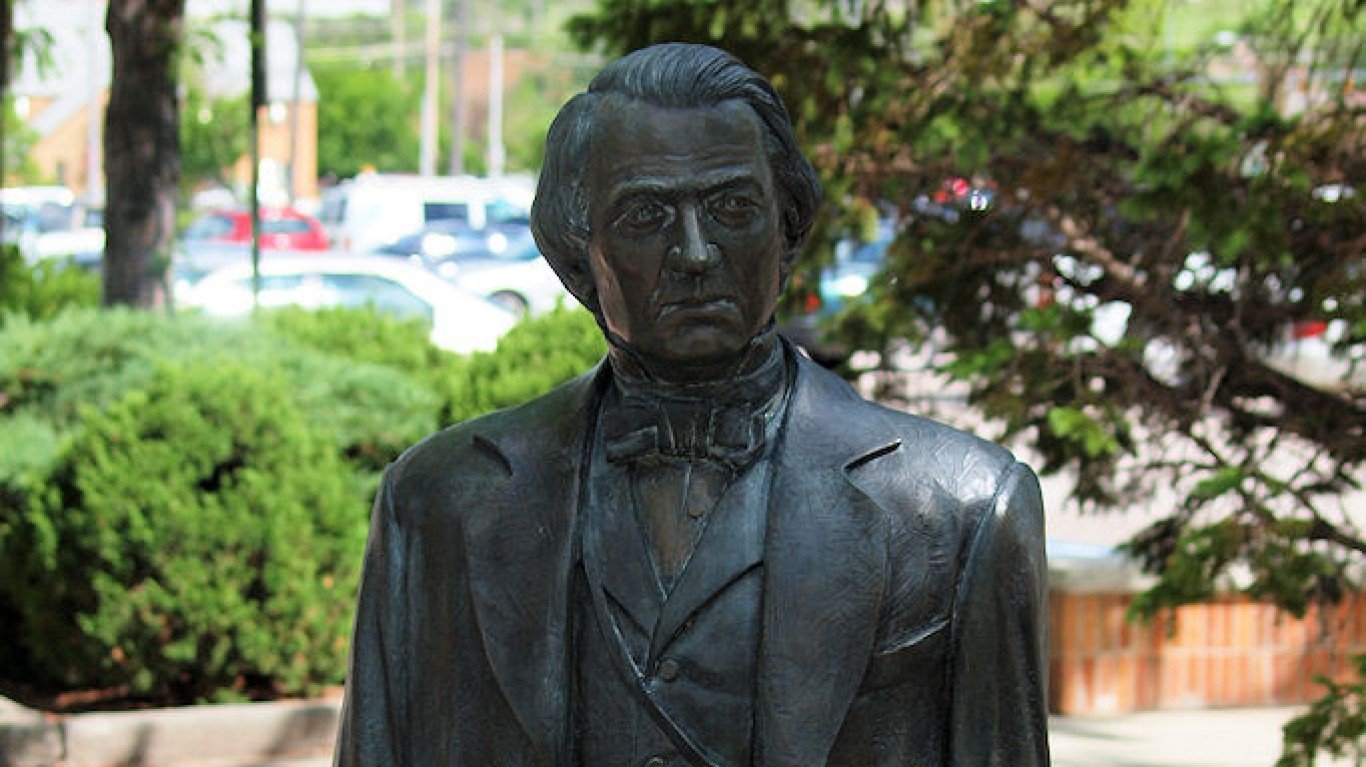
- Presidential term: 1865-1869
- Time served in military: 1862-1864
- Peak rank during military service: Brigadier general in the Union Army
Johnson, from Tennessee, was the only Southern senator who opposed secession. As a reward, in 1862, President Lincoln in 1862 appointed him military governor of Tennessee, with the rank of brigadier general. Johnson held this position throughout the Civil War until he was elected vice-president in 1864. He became president following Lincoln’s assassination.
Ulysses S. Grant (1822-1885)
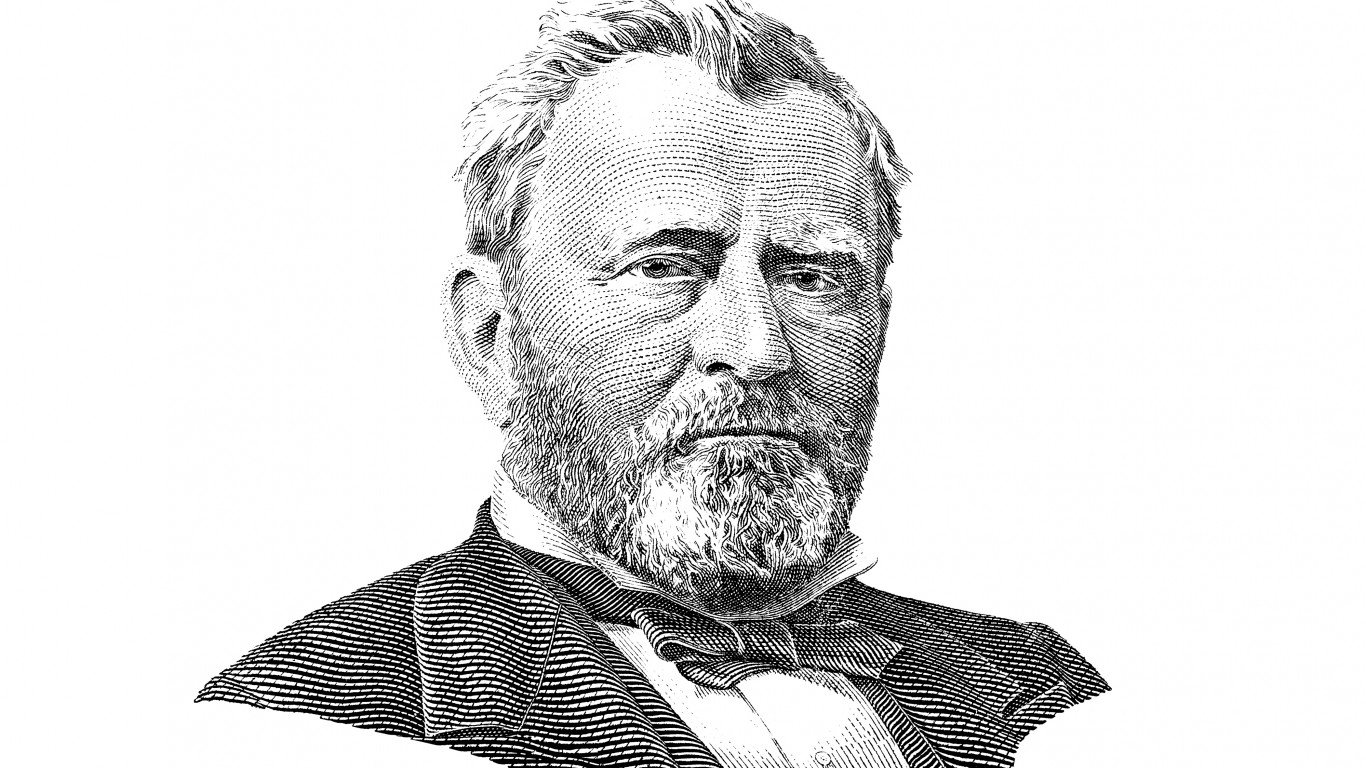
- Presidential term: 1869-1877
- Time served in military: 1843-1854, 1861-1869
- Peak rank during military service: General in the Union Army
Grant was the nation’s first four-star general. In the Mexican-American War, he served under General Zachary Taylor and with Robert E. Lee. Grant left the service but returned at the outbreak of the Civil War in 1861. He scored major victories at Fort Donelson, Shiloh, Vicksburg, and Chattanooga. Grant was commander of the Union armies from 1864 to 1865, eventually winning victory over the Confederacy.
Rutherford B. Hayes (1822-1893)
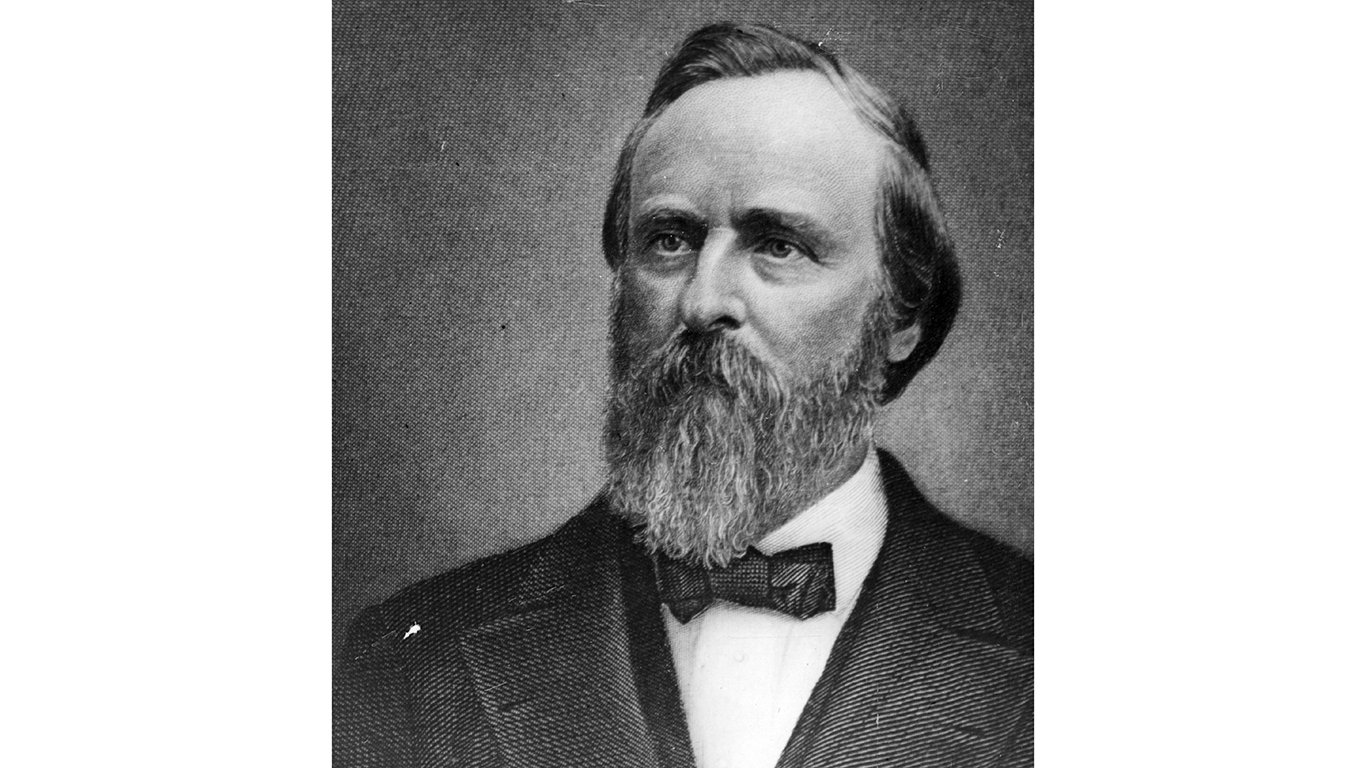
- Presidential term: 1877-1881
- Time served in military: 1861-1865
- Peak rank during military service: Brevet major general in the Union Army
When it comes to bravery, none had more courage than Hayes. The Ohio native was wounded five times during the Civil War, including once at the Battle of South Mountain. In 1864, he was promoted to brigadier general, and then became a brevet major general – meaning that he was rewarded with the title but didn’t receive the pay, rank, or authority of a standard major general. While Hayes was still in the Army, Republicans from Cincinnati convinced Hayes to run for the House of Representatives. He won easily, then became governor of Ohio. He was elected president in 1876 in one of the most hotly contested elections until recent times.
James A. Garfield (1831-1881)
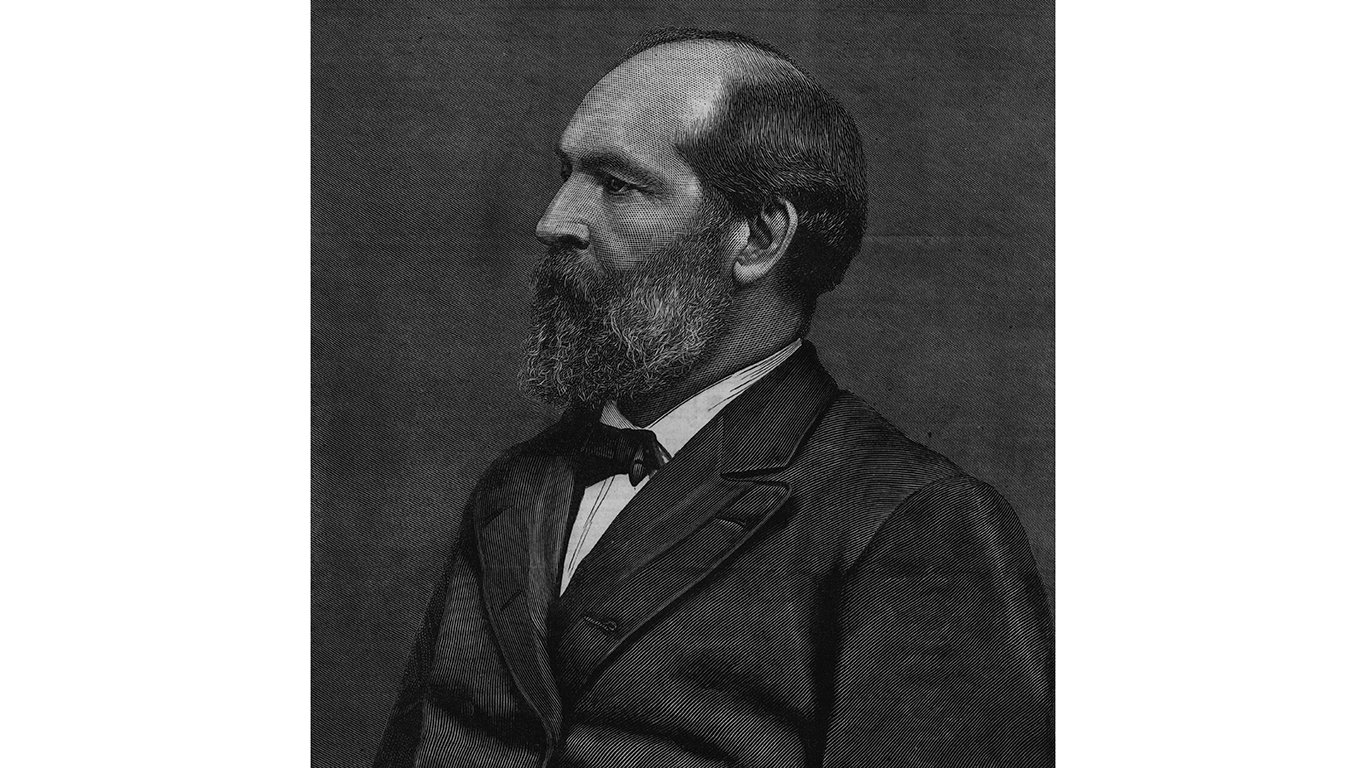
- Presidential term: 1881
- Time served in military: 1861-1863
- Peak rank during military service: Major general in the Union Army
Another Ohio native, Garfield volunteered for service during the Civil War and fought at the battles of Shiloh, Middle Creek, and Chickamauga. It was at Middle Creek that Garfield became a hero, and the encounter was dubbed “the battle that made a presidency.” He became a major general at age 30 and was one of the youngest officers in the Civil War to hold that rank. Garfield resigned from the Army in 1863 and was elected to Congress. That put him on the path to the White House and he was elected in 1880. However, an assassin’s bullet ended his life barely four months into his term.
Chester A. Arthur (1829-1886)

- Presidential term: 1881-1885
- Time served in military: 1858-1863
- Peak rank during military service: Brigadier general in the New York Militia
Arthur joined the New York state militia in 1858 for companionship and political connections. During the Civil War, he was appointed by the governor as engineer-in-chief with the rank of quartermaster general (today called logistical officer) for the militia. In that post, Arthur was in charge of provisioning and housing New York’s troops. After submitting a report on the status of the forts defending New York Harbor, he was promoted to brigadier general. Arthur didn’t serve on the battlefield because his wife was a Virginian and had relatives fighting for the Confederacy. He retired from the Army in 1863 and returned to practicing law. Arthur became the nation’s 21st president after the assassination of James A. Garfield.
Benjamin Harrison (1833-1901)
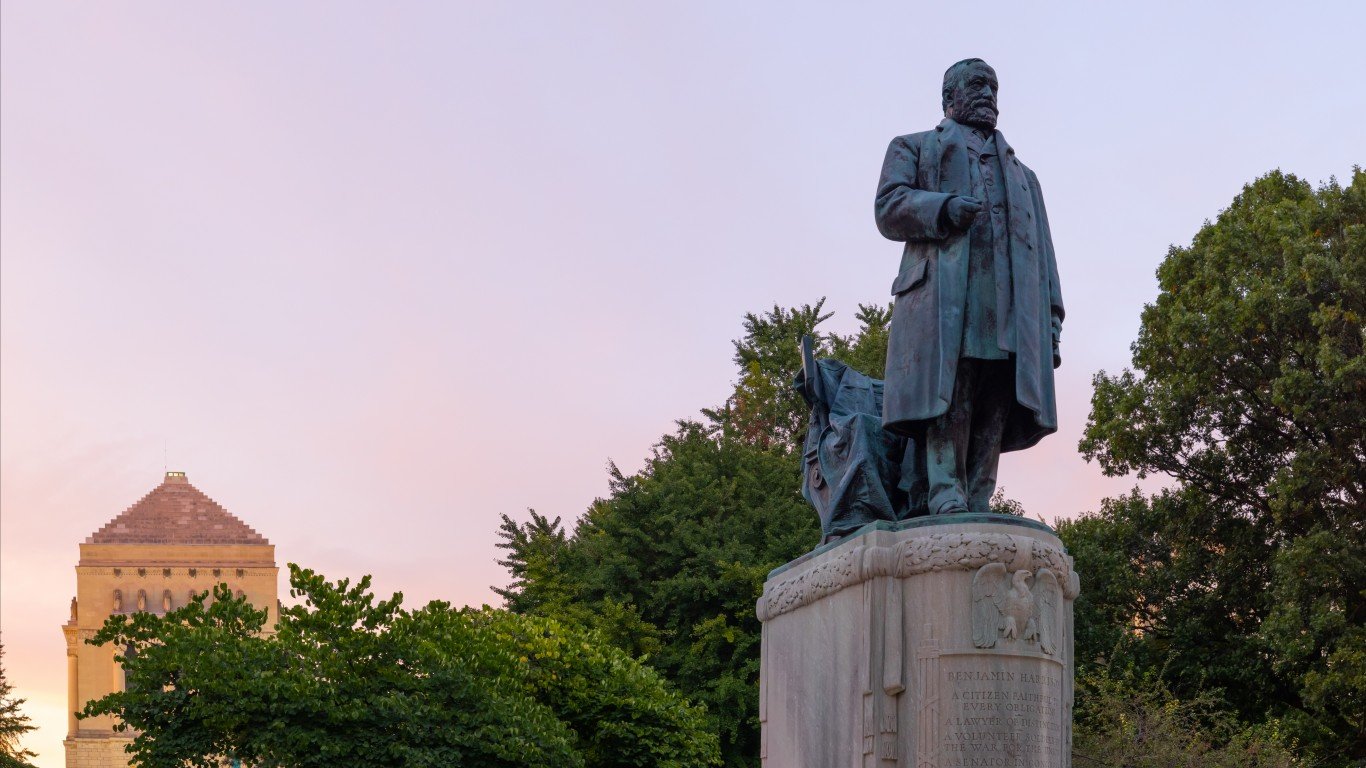
- Presidential term: 1889-1893
- Time served in military: 1862-1868
- Peak rank during military service: Brevet brigadier general in the Union Army
The grandson of William Henry Harrison, the nation’s ninth president, Benjamin Harrison, then a lawyer, helped recruit troops in Indiana to fight in the Civil War. He won a commission as a colonel in what became the 70th Indiana Volunteer Infantry Regiment, and in 1865, as a reward for his victories in several key battles, President Lincoln named him a brevet brigadier general.
William McKinley (1843-1901)

- Presidential term: 1897-1901
- Time served in military: 1861-1865
- Peak rank during military service: Brevet major in the Union Army
McKinley is the last U.S. president to have served in the Civil War. He enlisted in the Union Army in 1861 as a private, and fought at the Battle of Antietam, one of the bloodiest engagements of the war, the following year. As second lieutenant, McKinley served on the staff of Colonel Rutherford B. Hayes, a fellow Ohioan. He considered Hayes his mentor, and his relationship with the future 19th president would be helpful in his political career. McKinley attained the rank of brevet major just before the end of the war. In 1901, he became the third president to fall to an assassin’s bullet.
Theodore Roosevelt (1858-1919)

- Presidential term: 1901-1909
- Time served in military: 1898
- Peak rank during military service: Colonel in the U.S. Army
Theodore Roosevelt’s military experience began when he was appointed a second lieutenant in the New York National Guard in 1882. He resigned with the rank of captain four years later. In 1897, after having served as a state assemblyman, civil service commissioner, and police commission president, he became assistant secretary of the navy. He quit the post in 1898 to organize a volunteer cavalry unit, the famed Rough Riders, to fight in the Spanish-American War in Cuba – during which he was promoted to colonel. In 2001, he was posthumously given the Medal of Honor for his army service, becoming the only president who has been so honored. He also was the first president and first American to win the Nobel Peace Prize.
Harry S. Truman (1884-1972)
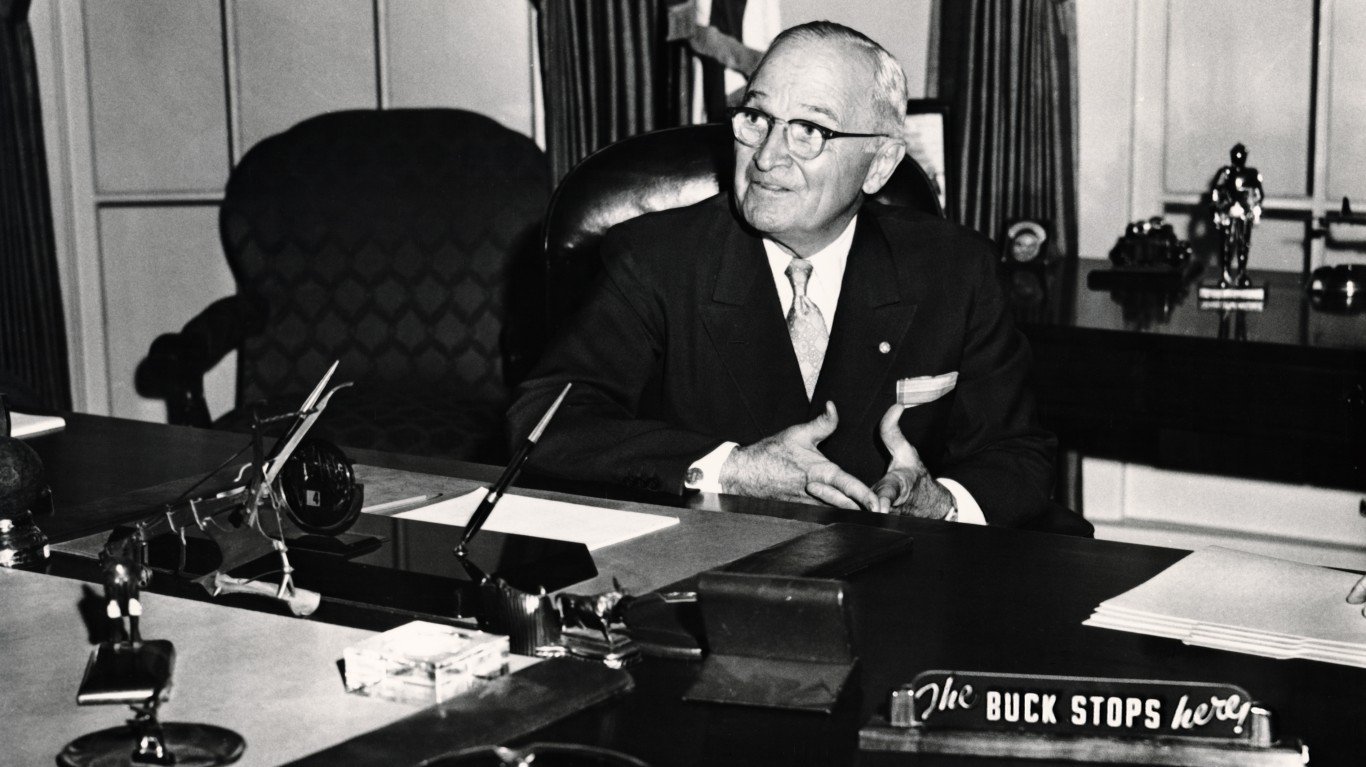
- Presidential term: 1945-1953)
- Time served in military: 1905-1911, 1917-1919, 1920-1953
- Peak rank during military service: Colonel in the U.S. Army Reserve
Truman was the only president to see combat in WWI. When he was 21, he tried to get into West Point, but couldn’t pass the eye exam. Instead, he enlisted in the Missouri National Guard, passing the vision test by secretly memorizing the eye chart, serving until 1911. When the U.S. entered WWI, he rejoined his unit, becoming a captain in charge of an artillery unit. The experience showed he had leadership ability, and the men he commanded, from his region of Missouri, supported him during political ascendency. Honorably discharged in 1919, he joined the Officers Reserve Corps the following year, and was promoted to colonel in 1931. He remained an inactive reservist from the 1940s through 1953.
Dwight D. Eisenhower (1890-1969)

- Presidential term: 1953-1961
- Time served in military: 1915-1953, 1961-1969
- Peak rank during military service: General in the U.S. Army and supreme commander of the Allied Expeditionary Force in Europe
Eisenhower graduated from West Point in 1915 and two years later was promoted to lieutenant colonel, commanding the Army’s tank training unit in Gettysburg, Pennsylvania. After the U.S. entered WWII, he proved his talent as a strategist creating war plans in Washington, rising to become a commanding general in the European and North African theaters, leading successful campaigns in Tunisia, Sicily, and Italy. He was subsequently named supreme commander of the Allied Expeditionary Force, and his skills helped the Allies defeat the Nazis. Eisenhower’s ability to oversee endeavors like the invasion of Normandy and delegate authority to subordinates helped win him support in his quest for the White House.
John F. Kennedy (1917-1963)
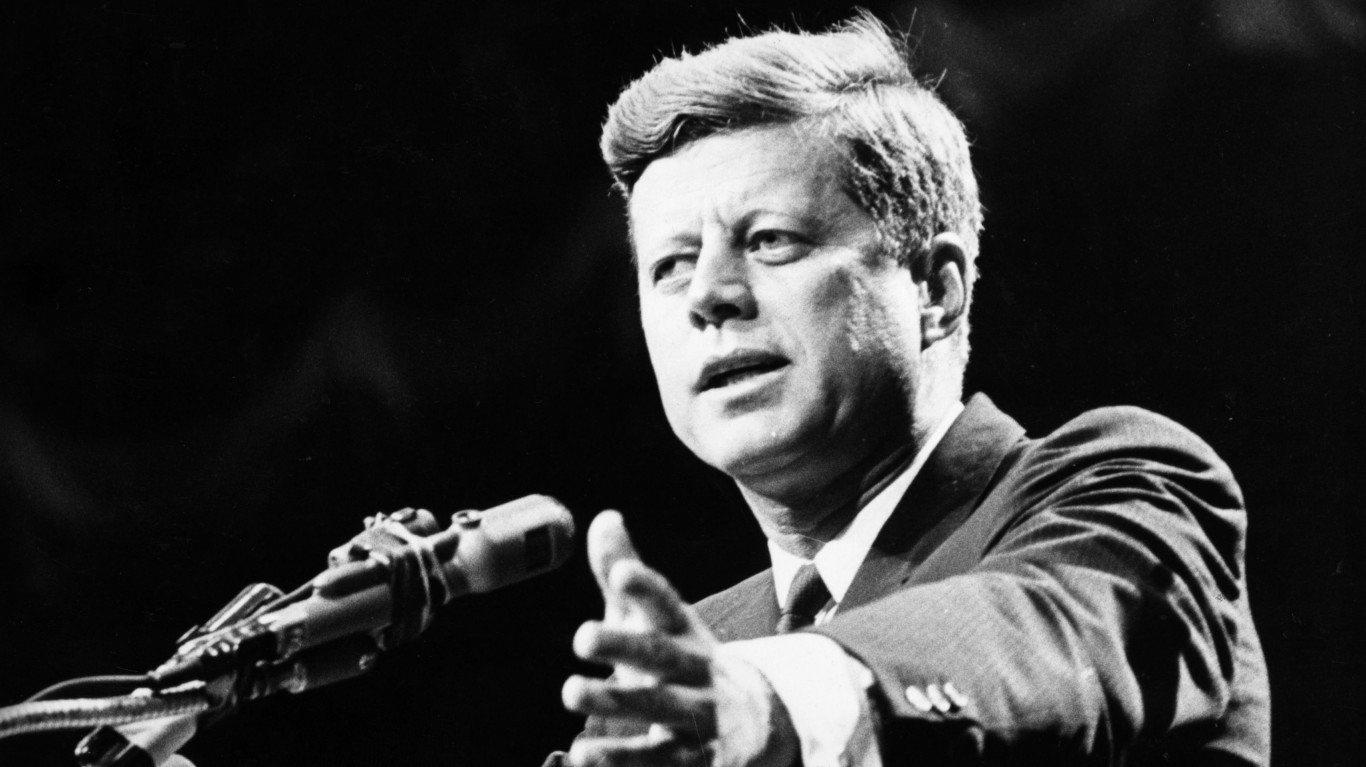
- Presidential term: 1961-1963
- Time served in military: 1941-1945
- Peak rank during military service: Lieutenant in the U.S. Navy
The future 35th president joined the Navy after graduating from Harvard. After an attack by a Japanese warship sliced his PT boat in two near the Solomon Islands during WWII, Kennedy safely brought survivors to a nearby island. He was awarded a Navy and Marine Corps Medal and a Purple Heart. Kennedy’s exploits and a well-managed and financed political campaign got him elected to the House of Representatives and ultimately to the White House, where he served for two years before his tragic end.
Lyndon B. Johnson (1908-1973)
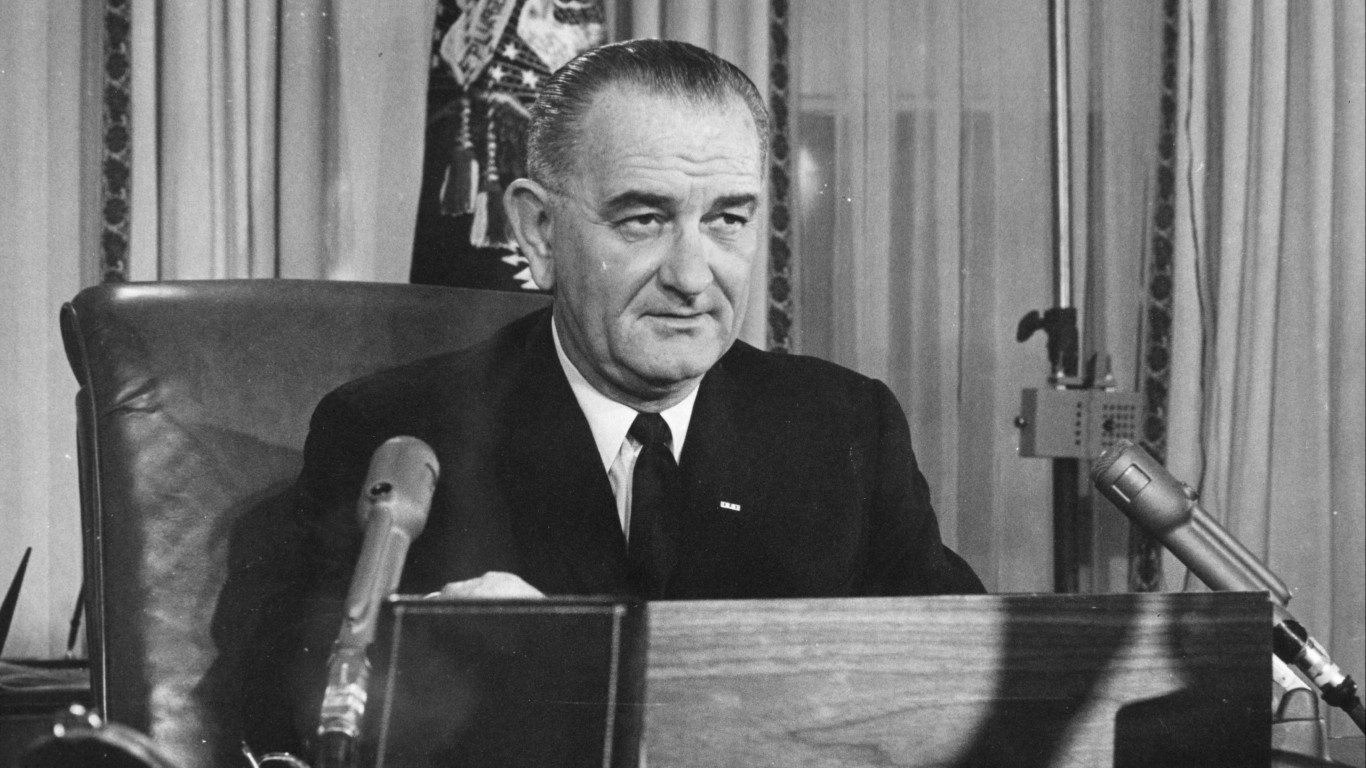
- Presidential term: 1963-1969
- Time served in military: 1941-1942
- Peak rank during military service: Commander in the U.S. Navy
Like his predecessor, Johnson served in the navy during WWII. He was on active duty from 1941 to 1942 as lieutenant commander beginning three days after the Japanese attack on Pearl Harbor. Johnson was stationed in New Zealand and Australia and was an observer of bomber missions in the South Pacific. Apparently he cheated fate when he took a bathroom break and missed a flight that was shot down by the Japanese with all of the crew perishing. Johnson was later awarded the Army Silver Star for his service.
Richard M. Nixon (1913-1994)
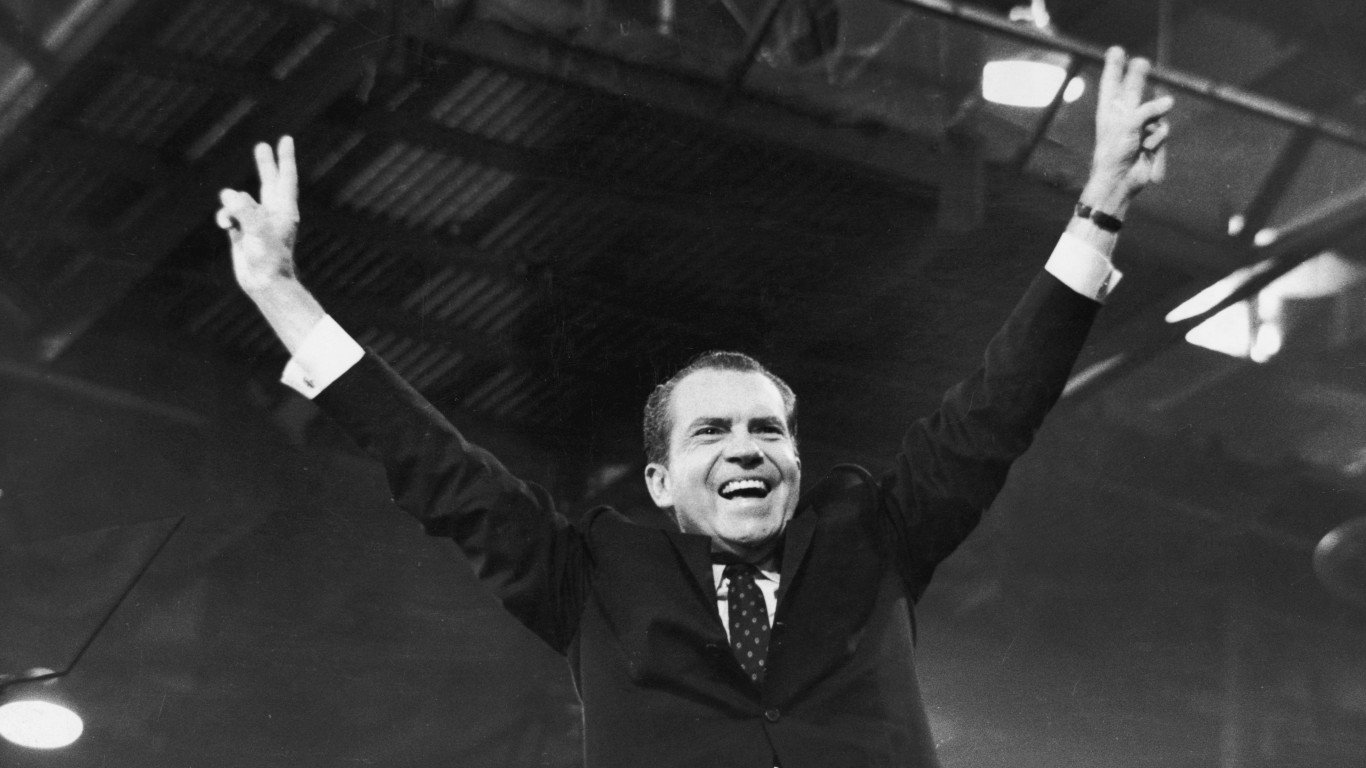
- Presidential term: 1969-1974
- Time served in military: 1942-1946
- Peak rank during military service: Lieutenant commander in the U.S. Navy
Though he could have claimed an exemption from service as a Quaker, Nixon applied to the U.S. Naval Reserve in 1942. He was on active duty in the South Pacific serving as an aviation ground officer, but did not see combat. He eventually rose to the rank of lieutenant commander before resigning his commission in January 1946. Nixon’s political career began after he left the service and he won a House seat representing California. His fervent anti-communism and foreign policy expertise put him on the road to national recognition and eventually led to the presidency.
Gerald R. Ford, Jr. (1913-2006)
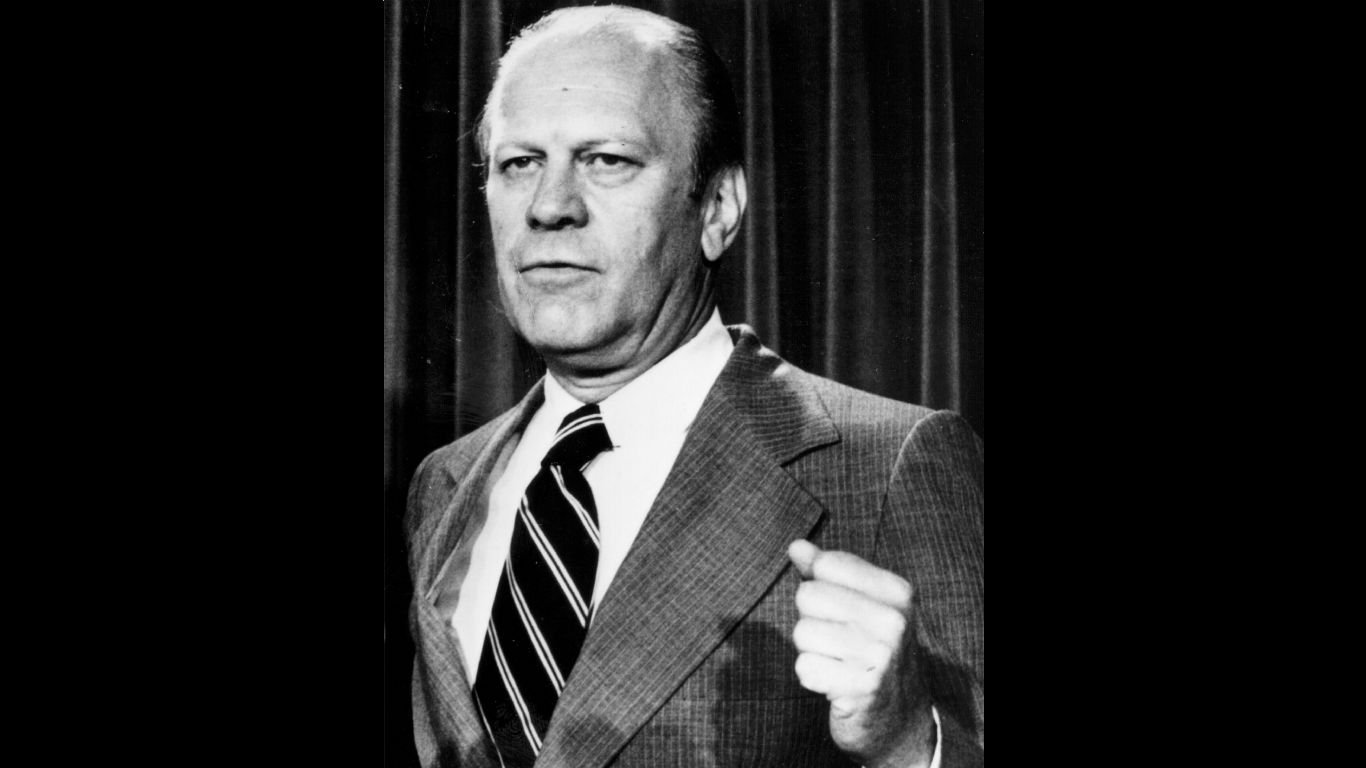
- Presidential term: 1974-1977
- Time served in military: 1942-1946
- Peak rank during military service: Lieutenant commander in the U.S. Navy
Ford enlisted in the navy shortly after the Japanese attacked Pearl Harbor. The future 38th president served on the USS Monterey and was part of air strikes and landings in the Pacific Theater during WWII. Ford was first elected to Congress in 1948 and later became the first vice-president chosen under the terms of the 25th Amendment after the resignation of the disgraced Spiro Agnew. In 1974, in the aftermath of the Watergate scandal, he succeeded Richard Nixon, the first president ever to resign.
Jimmy Carter
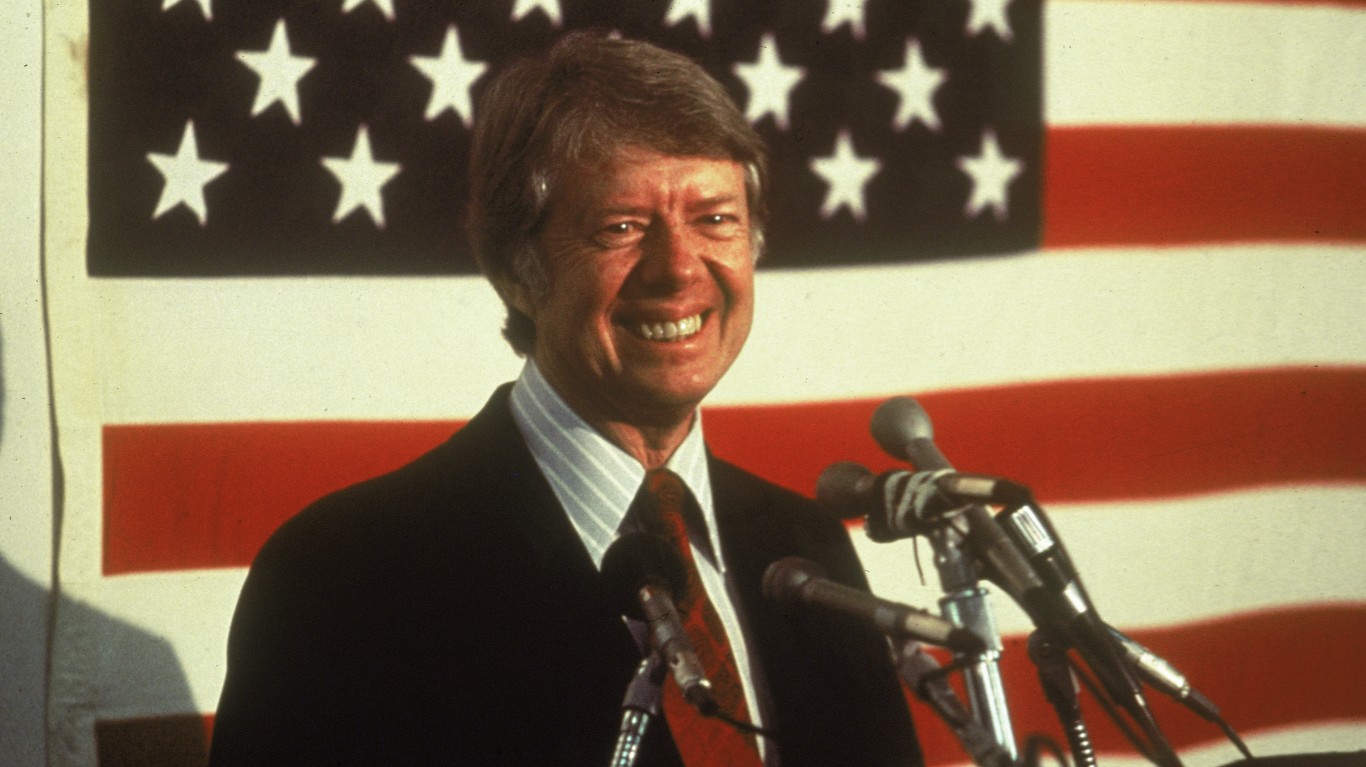
- Presidential term: 1977-1981
- Time served in military: 1946-1961
- Peak rank during military service: Lieutenant in the U.S. Navy
Jimmy Carter entered the United States Naval Academy near the end of WWII, becoming an ensign on the USS Wyoming upon graduation in 1946. After he served on a surface ship for two years, Carter applied to the submarine service and eventually became a lieutenant. It was during this duty that he was involved in the development of nuclear-powered submarines. In 1953, as he was about to become the engineering officer for the USS Seawolf, one of the first nuclear subs, his father died and he resigned to attend to family matters. He remained in the Navy Reserve until 1961. Carter won the governorship of Georgia before claiming the presidency in 1976. He is the longest-lived and longest-retired president, and one of only four U.S. presidents to have won the Nobel Peace Prize.
Ronald Reagan (1911-2004)
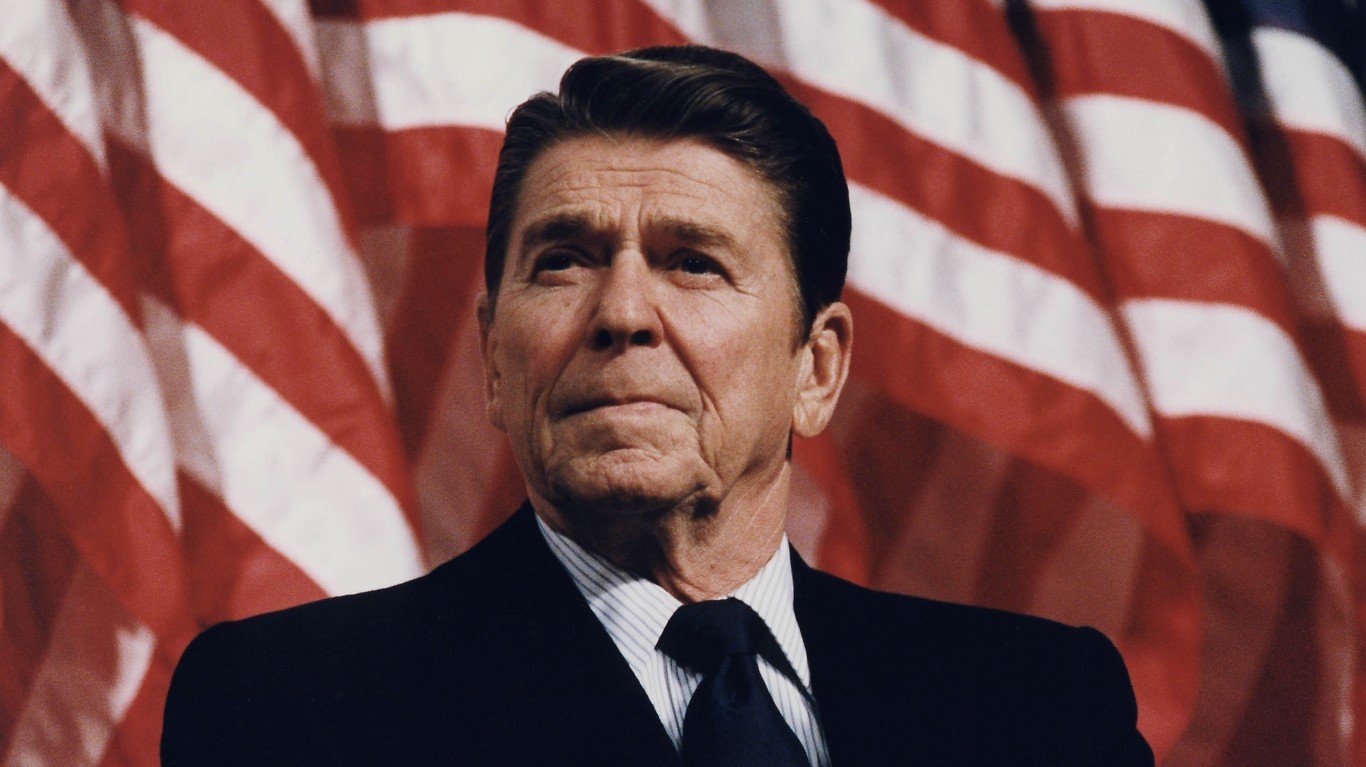
- Presidential term: 1981-1989
- Time served in military: 1942-1945
- Peak rank during military service: Captain in the U.S. Army Air Forces
Ronald Reagan served in the U.S. Army from 1942 to 1945. He was called to active duty during WWII though his eyesight prevented him from seeing combat. Reagan worked in the Army’s motion picture unit and also participated in war loan drives. Reagan got his first taste of politics when he was chosen as president of the Screen Actors Guild in 1947. After leaving acting, Reagan would go on to serve as governor of California and was elected in 1980 for the first of two terms as president.
George H.W. Bush (1924-2018)

- Presidential term: 1989-1993
- Time served in military: 1942-1945
- Peak rank during military service: Lieutenant (junior grade) in the U.S. Navy
George H.W. Bush enlisted in the navy on his 18th birthday during WWII and became its youngest pilot at the time. He flew 58 combat missions between 1942 and 1945 and was promoted to lieutenant (junior grade). While flying to bomb an enemy radio site in 1944, his plane was shot down by the Japanese over the Pacific and rescued by an American submarine. Bush earned the Distinguished Flying Cross for heroism under fire. Bush first won a House seat in Texas in 1966. After Ronald Reagan won the Republican nomination in 1980, he selected Bush to run with him and the ticket won in a landslide. Bush succeeded Reagan in 1989.
George W. Bush (1946-)
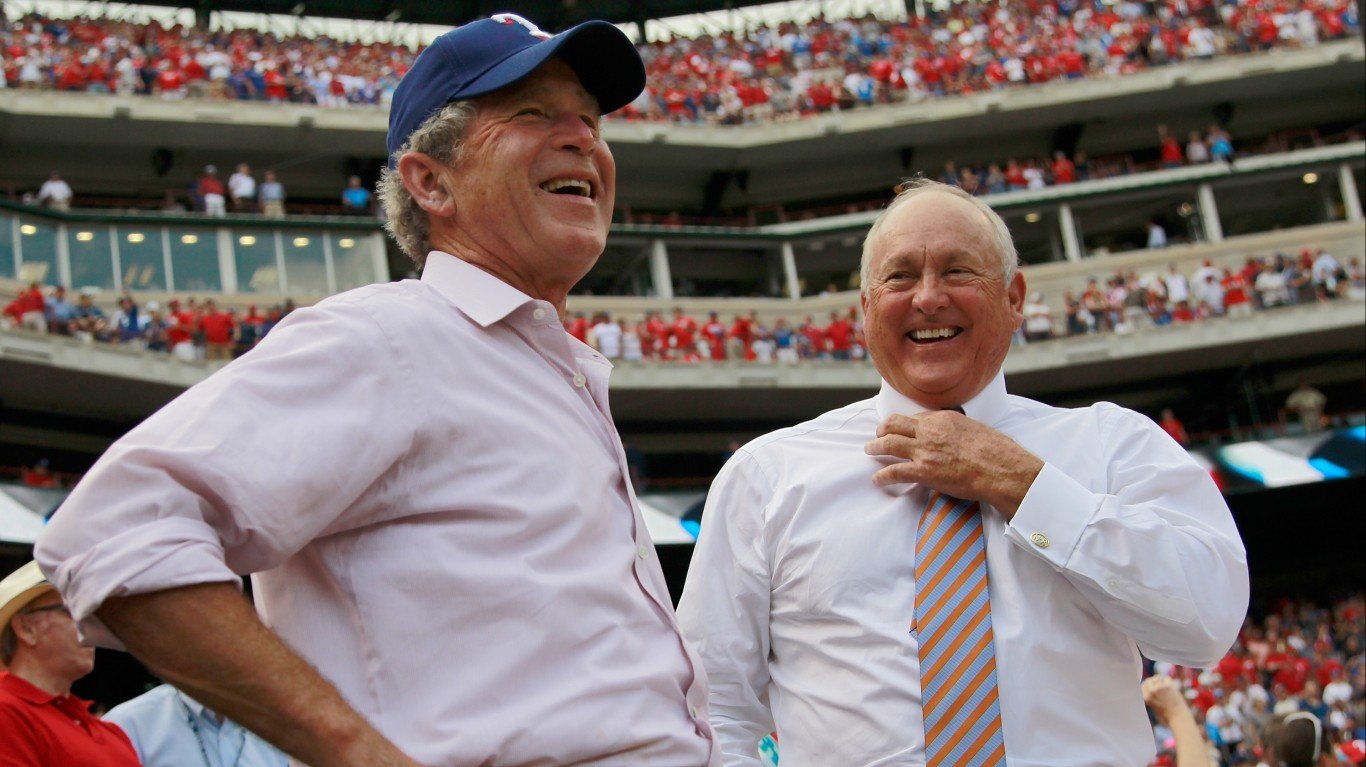
- Presidential term: 2001-2009
- Time served in military: 1968-1974
- Peak rank during military service: First lieutenant in the Texas and Alabama air national guards
The younger Bush was a first lieutenant of the Texas Air National Guard and served from 1968 to 1973 while the U.S. was involved in the Vietnam War. After moving to Alabama to work on a political campaign, he served briefly with that state’s air national guard. He was honorably discarded in 1974. Because Bush did not serve in Vietnam, his political foes claimed he had used political connections to avoid combat. This became an issue during the 2004 presidential campaign when Bush was running for re-election.
